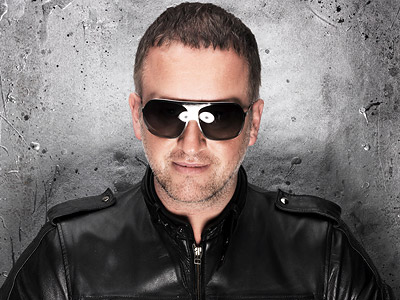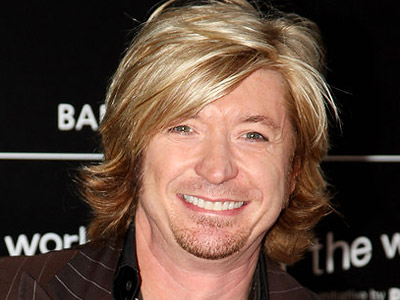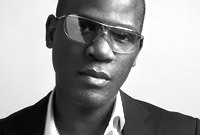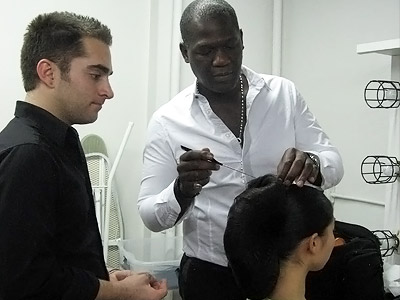If you've found yourself a new hair salon and you want to get the best new hairstyle possible, then you need to know what to talk about in your consultation. (Even if you haven't got a new hairstylist but you feel that you could get a little more out of your consultations then you'll find these pointers about things you should discuss helpful too.) Is it best to simply be friendly and see if you and your hairstylist are on the same “wavelength,” or should you bring a checklist of questions and get annoyed if they don't answer every last one? Find out what you need to know and how to ask below.
Hairstylist Errol Douglas
First of all you need to be prepared. You're going to be talking to your hairstylist about things like your face shape, hair texture and density, and hair color, and you're going to be evaluating your hairstylist based on their ability to address these issues, so you need to have some familiarity with them yourself. You need to have some idea of the relationship between different hairstyles and different face shapes and hair textures etc- and it only takes a few minutes to get a grip on these things. And you need to bring some examples of hairstyles you like too. Check out TheHairStyler.com's hair consultation and have a quick read of "The Right Hairstyle for Your Face Shape."
For your first appointment it's best to schedule a consultation only. That way you'll be assured there will be time to talk about all the things you want. Here's another tip too: when you give the salon a call it's best to ask for someone experienced. Now, there are two approaches you can take to your first consultation: if possible schedule it for a Tuesday or Wednesday morning because salons are usually quietest then and you will get plenty of time to talk with your new hairstylist; or, schedule your first consultation for the busiest time- and this is to see how your new stylist copes with the pressure. If you take the second option and it's like a war zone in your new hair salon (the phone's ringing off the hook, the floor's a mess and your stylist has little beads of sweat on their forehead because they're stressing out of their mind), then you might want to kindly excuse yourself and leave. Another thing to take note of while you're waiting is your new hairstylist's own hairdo, as that's usually a refection of the work they do, and the kind of styles other clients in the salon are getting.
Hairstylist Mark Leeson

If everything's going well and you're proceeding with your consultation, start by showing your hairstylist (or describing- but showing pictures is better) the kinds of hairstyles you're thinking of getting. Your stylist should have a thorough look at your images and most importantly they should evaluate them in terms of your physical attributes (face shape, hair texture and density and hair color)- and they should talk to you about their assessment of the hairstyles and your attributes. If they don't openly consider these issues and you have to ask “Will this hairstyle suit my face shape...?” then that's not a good sign. And, if your stylist says no to a hairstyle idea without saying why, it probably means they can't do it. They need to explain themselves clearly and they need to actually listen to what you're saying too. But having said that, you need to be clear about what you'd like too, and make sure you don't come across as pushy either.
Other things your hairstylist should talk you through is your lifestyle and the maintenance routine of the new hairstyles suggested. In order to evaluate whether or not a hairstyle will work they need to ask you about your personality (for example: are you easy going and interested in low maintenance hairstyles?) and your daily hair care routine. They should probe your past bad hair experiences too and offer their advice about preventing them again in the future. Your hairstylist should certainly explain the kind of styling and maintenance specific to the hairstyles you're considering, as well as the hair products and tools you may need. At this stage it's good to ask them about the quality of the products they use in the salon as well as the range of products available for you to take home.
Hairstylist Nicky Clarke

It's up to you to do the right thing too. Bring examples and explain yourself clearly. You should ask about the hairstylist's level of expertise, their area of specialty and whether or not the hair salon makes an effort to stay up to date with trends in hairstyle fashion and education- but don't seem like you're interrogating them. Be friendly and conversational. You need to be firm in explaining what you like and don't like, but you don't want to seem bossy. If your hairstylist thinks that the hairstyles you're interested in aren't possible (in terms of your physical attributes and lifestyle), then they should suggest alternatives and you should also be flexible and open to their suggestions. But if you don't like something you must say so. And remember too that your hairstylist may be a specialist, meaning they may want to defer you to another stylist more experienced in the area of your interest.
It won't take you long to discuss these things. Now remember that it's one thing to find out if your new hairstylist has the expertise, knowledge and bedside manner that sets them apart as a quality hairstylist, but it's also important to think about whether or not you get on and simply “gel.” It's important to have a good, long lasting relationship with your hairstylist, and so if you feel that your conversation was strained even though they may have answered all your questions with textbook responses, then maybe that hairstylist still isn't for you.
Getting the right hairstylist will prevent miscommunication, mistakes and hairstyling nightmares. No one likes to be upset about their hair, and if you bear these simple guidelines in mind and arrive at your hair salon prepared and you aim for a genuine and thorough conversation with your hairstylist, then you're well on your way to a fulfilling future of great hair.




